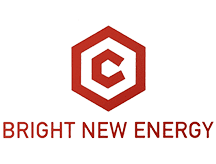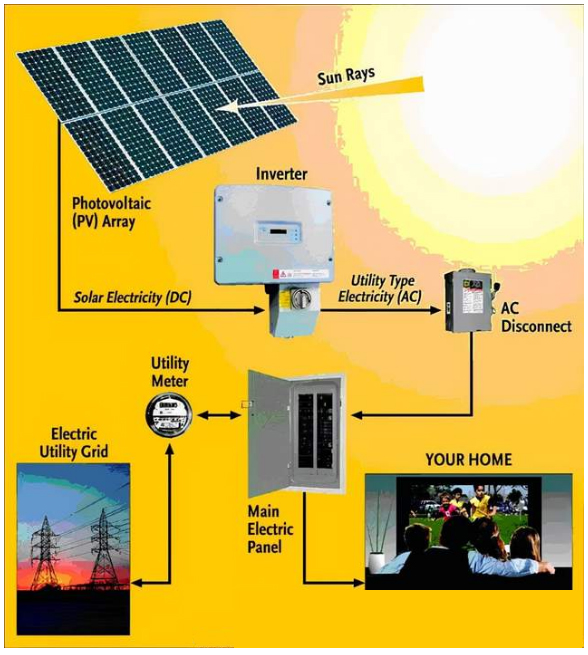Recently, news of power rationing in various provinces of China has frequently appeared, and solar panels have been mentioned in many household emergency material reserve lists, so that the business of household solar power generation has been discussed by many netizens.
On the one hand, in the context of carbon neutrality and carbon peaks, the cost of coal power generation has risen, and the demand for new energy alternatives has risen; the price of solar power generation equipment has continued to fall, which can not only ensure self-powered, but also sell to power companies to make money. Isn’t there more room for the development of home solar energy?
However, the payback period is long, the return on investment is relatively low, and there is no incentive to remove the subsidy; the deployment environment has certain requirements, and installation on the roof is more troublesome during the renovation and renovation; regular maintenance and repair are required, which brings additional costs.
As early as 1860, some scientists believed that fossil fuels would become scarce, and equipment such as photovoltaic panels and solar collectors began to become popular; however, to this day, solar energy is still regarded as a new energy and new industry in the ascendant. The photovoltaic industry 2019 Industry data at the Seminar on Development Review in the First Half of the Year and Prospects for the Second Half of the Year showed that the power generation from renewable energy sources such as solar energy accounted for only 20% of the total power generation.
Looking at the global market, one type is residents of modern Western countries such as Europe, America and Australia, who actively support household solar energy to solve electricity demand. In 2015, the total installed capacity of photovoltaic power generation in the world exceeded 40 million kilowatts. The main markets are Germany, Spain, and Japan. , Italy, of which Germany alone added 7 million kilowatts of installed capacity in 2015. The other is China’s rural areas, which are the main focus of household solar power generation. Many central and western regions regard the photovoltaic industry as one of the important poverty alleviation measures. The common feature is dominated by single-family buildings, and the roof is easy to demolish and modify.
Solar energy resources and solar power generation industry may not be positively correlated. For example, Africa is the continent with the most sunlight in the world, and solar energy resources are abundant, but in reality, only South Africa is the only country with more than 50 megawatts of photovoltaic power plants. California has more solar power stations than all of Africa, and the installed solar power capacity is twice the power generation capacity of all Nigeria. Europe’s solar energy resources are only a small part of Africa’s, but there are more solar energy equipment.
The performance of this polarization makes the household solar energy industry present a “dumbbell-shaped” structure, mainly concentrated in developed and underdeveloped regions.
We know that urban and urban consumer markets often have “income effects,” “demonstration effects,” “linkage effects,” and “cumulative effects.” Therefore, a stable market structure is often a “spindle” dominated by middle-end consumers.
This also shows a basic fact of the development of the household solar energy industry: to usher in rapid growth, it is necessary to accelerate the optimization from the “dumbbell type” to the “spindle type”, actively embrace the urban and urban markets, and end the current “polarization” situation.
So, is it possible to spread solar panels in cities?
It is difficult to persuade the vast majority of urban residents to invest real money, manpower and material resources to transform themselves by just relying on sentiments such as caring for the environment.
Therefore, many countries will design a series of encouragement and subsidy measures when implementing sustainable energy strategies. For example, in 2006, the California Congress launched the “California Solar Energy Initiative” plan, which has created a wave of installing household solar power generation systems.
Policies alone are not enough. Household consumers in the middle of the market need to overcome three obstacles to embrace solar power.
First: Is the business model reasonable?
It is generally believed that the household solar power generation system “one time investment, 25 years return”, is a typical long-term value investment.
We can calculate an account. Generally, a 1kW photovoltaic power generation system can be used for home lighting, television, and computer; a 3kW photovoltaic power generation system can meet the electricity needs of a family of 3 people, especially kitchen electricity; 5kW photovoltaic power generation The system can meet the needs of a family of 5 people.
Household users tend to choose 5kW capacity, which generally requires an investment of 40,000 to 100,000 yuan. In 2017, a one-stop installation of a 5KW solar power system for a well-known Chinese company required 40,000 yuan. After subsidies in the US state of Arizona, a 5KW solar power system would cost about US$10,000. A survey of 2,200 homeowners showed that investment costs are too high to be considered.
In addition, through the modes of “self-use, surplus electricity online” and “full online access” to obtain electricity return, the payback cycle often takes 5-7 years before it can enter a profitable period.
At present, subsidies for green energy in various countries are generally around 20-30%, and the United States will provide 26% of the installation cost of solar power systems in 2020. Once the large-scale rollout and subsidy are cancelled, the profit cycle will continue to be extended.
Therefore, if rural residents lack safe and reliable investment channels, it is understandable to invest the remaining money in household photovoltaic power generation. However, urban residents with a high degree of digitization and rich financial products and services may feel that it is a bit of a taste to rely on this profit.
The most practical solution is probably to place a photovoltaic panel outside the window to meet the emergency charging needs of home computers, mobile phones and other devices. But in this way, how much market space is there?
Second: Does long-term protection exist?
Of course, there may also be people who are willing to unconditionally support green energy, or although the return is small but “grasshopper legs are also meat”, they are willing to install solar power generation systems in their homes to quench their thirst for electricity. Of course we have 10,000 support for this spirit. However, before choosing the relevant equipment, you must think carefully about the later operation and maintenance issues.
As mentioned earlier, it takes more than 5 years for household solar power generation to maintain capital/profitability. The maintenance of photovoltaic panels, the aging of batteries, and the attenuation of related components will all bring about the need for long-term cleaning and maintenance. It will affect the efficiency of light energy conversion and reduce power generation.
In Australia and other places, the construction of solar home power generation systems began 30 years ago, and a relatively mature market mechanism and service system have been formed. Consumers don’t have to worry too much about equipment vendors running off/closing and finding after-sales services; Safety hazards.
In addition, the cost-recovery period of household solar energy is relatively long, and the sustainability of the policy needs to be taken into consideration. Otherwise, if there is a change, it will become “power generation with love.”
For example, in 2015, Nigeria, Africa spent US$16 billion to develop solar power, but it ultimately failed due to government problems. This is why the grid ovate report of the Global Industry Forum believes that Africa’s solar energy development potential is the best in the world, but the real industrial development is far from insufficient.
A sustainable and predictable long-term guarantee mechanism is the key to the competitiveness of the solar energy industry.
Third: Is urban development allowed?
In addition to the rigid conditions of solar energy resources, household solar power generation also needs to be close to the main grid to reduce investment in new transmission lines. At the same time, it should be closer to the power load center to reduce power transmission losses.
Compared with rural users with small electricity load and scattered, urban development of household solar energy seems to be more economical. At present, China’s urbanization rate has reached 56% in statistics, which seems to have brought a huge market space, but it should be noted that the construction of modern cities in Europe and America, which “industrializes urbanization”, is at the same time as urban expansion. , There have also been a lot of problems. For example, the concentration of financial capital has led to high asset prices. The per capita living area of first-tier cities such as Beijing, Shanghai, Guangzhou and Shenzhen are lower than the national average. At this time, we must find 20-30 square meters of sunny, open, What kind of family does it need to install photovoltaic panels on a south-facing roof? In places such as Jiangsu, where the economy is more developed, houses or villas are usually installed on the roof. Asset barriers further limit the scale of users.
For another example, the rapid development of large and medium-sized cities in China in the past has left many defects in infrastructure, public space and other aspects. The installation of photovoltaic panels in the district will naturally affect the aesthetics of the community and cause a certain amount of light pollution. It is hard to imagine that a city on the road to “beautiful” will greatly encourage the blue wow photovoltaic panels.
The middle part of the market is difficult to move. Is it possible that household solar power generation will not be able to continue? Not really. Today, China’s vigorous efforts to promote urbanization and rural revitalization may bring new opportunities to the household solar energy industry. The “spindle” market may not necessarily be the rise of central China, but it can also flow from the tail to the central, right?
Perhaps, the future of household solar energy, like many industries, lies in the green countryside and ecological China.
<With long-term experience, Xiamen Bright New Energy Co.,Ltd manufactures many kinds and levels of solar lights in Xiamen. More information, please contact Miss Lin(+86 13123388978).>
Post time: Nov-24-2021

